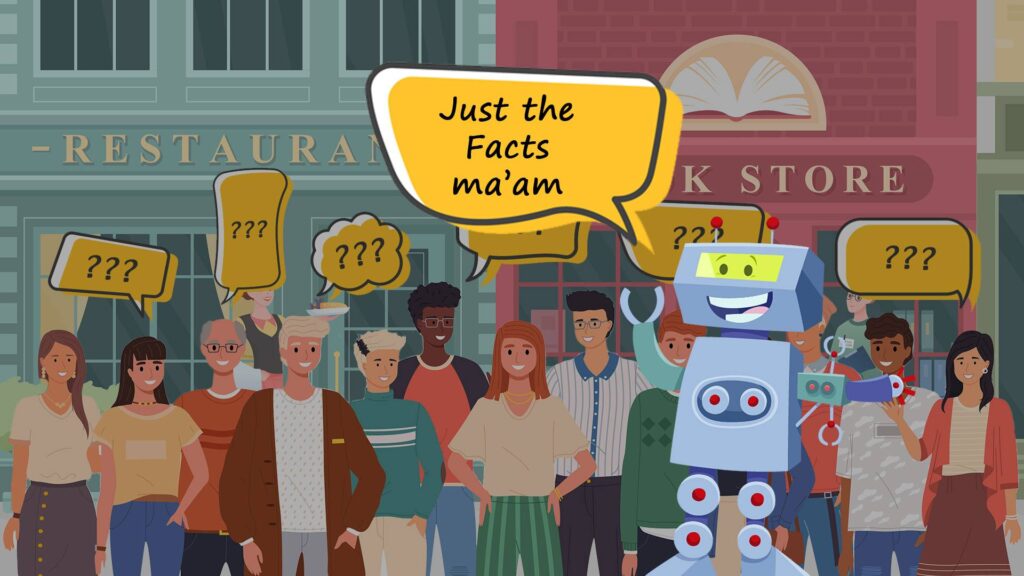Just the Facts ma’am, Just the Facts
How do Large Language Models (LLM), the AI technology behind GPT’s like ChatGPT, Google AI Search, and Perplexity understand the questions we ask?
It’s all about the information surrounding the topic that we ask about. Information such as:
- Previous dialogues
- Topic-specific details gleaned from online
- Situational cues
They use all three to establish the most likely meaning, intent, and tone of what is being asked and how to respond.
Everything starts with context; the supporting information we use to set the scene. When conversing with friends and colleagues, you naturally paint the scene by weaving context into the conversation.
If I say “FIRE”, without context, all you have is your own bias to determine what I might mean. For me, my initial thoughts are of warning, threat, and something to worry about.
What if I expand and say, “We were on FIRE last night”? Was I part of a group that was literally on fire, or perhaps I was talking about a team’s performance?
Context is everything, and for a GPT, it is no different. The context establishes intent and meaning.
Without context, a GPT risks misinterpreting the request and is likely to produce trivial and often inconsistent response.
What does this mean for a marketer?
To understand how to create AI-ready content, we need to begin by defining the Ideal Customer and how they are most likely to fashion a prompt.
What intent will they present to the GPT?
For example, while the following prompt will solicit a valuable informational response:
Best running shoes
It will do so without knowing anything about the ideal customer that your business is targeting. What if your business focused on the sub-$100 market and women instead of men?
In this case, perhaps the consumer would ask the following question/prompt instead?
Best women’s running shoes under $100
For a GPT, context is everything, and it will mirror the vagueness presented in the question posed to it. As you write your content, knowing your target customer’s needs and intent will ensure that your business is mentioned over others in a response.
How Should I Structure My Content for AI?
GPT’s like clarity and structure.
Content needs to be concise and organized, focusing on clearly answering questions.
The GPT prefers the TLDR (Too Long Didn’t Read) summary as opposed to essay-style content. Use formats like:
- Short paragraphs
- Bullet points
- Numbered lists
Avoid being vague and ensure that the exact answer to a question is promoted to the top of your content, and not buried after a lengthy setting-the-scene dialogue.
Be original, while staying on point.
And, never, ever forget the context. The more niche you can be, the better.



